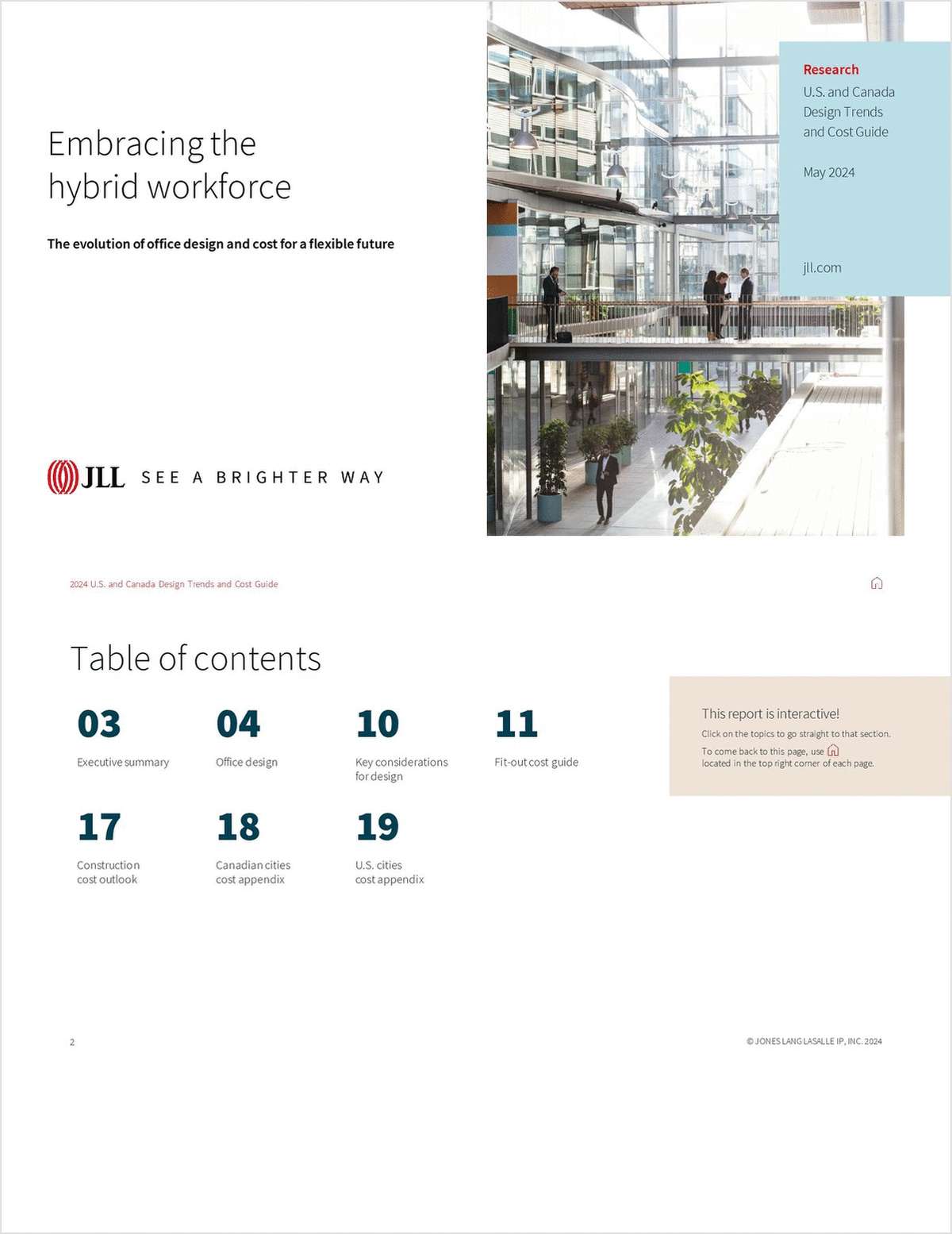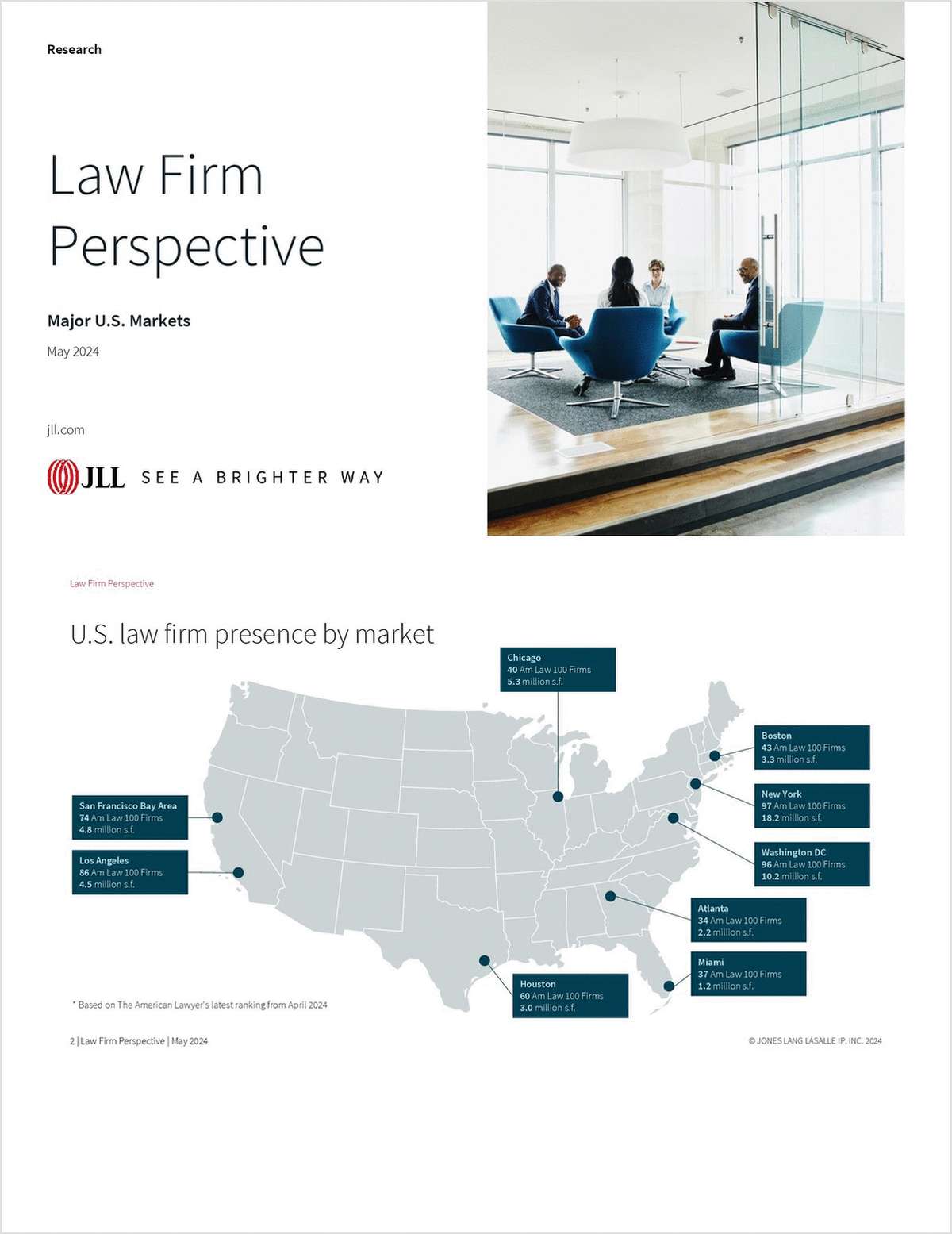7 Habits of a Client-Focused Lawyer
Simple strategies for building effective, long-term client relationships.
August 10, 2018 at 07:34 PM
7 minute read

As a legal marketing and business development professional, one of my primary responsibilities is to understand and respond to client needs, bringing the voice of the client to the firm. We solicit feedback from clients in a variety of ways: in-person client interviews at the client's offices, electronic client surveys on
core service metrics, industry surveys and reports, and client presentations at industry conferences.
I recently compiled key takeaways from more than 125 in-person client interviews our firm has conducted, and identified key themes that can help lawyers better serve their client base. These ideas include practical steps you can immediately implement to become a more client service-oriented lawyer.
Have a Data-Driven Mindset
Although most law firms focus on internal data points (billable hours, realization, billing rates, net margin, etc.), client-driven data should be informing your firm's strategic plan. Ask your top 20 clients what metrics their legal departments track and then deliver legal services in a manner that helps them meet (or beat) their target metrics.
A general counsel shared with me that her company had monthly leadership team meetings where financial projections and actual expenses were displayed on the screen for all company leaders to see. “You don't want to be the legal department in the red—it's embarrassing,” she said. One client provides benchmarking spreadsheets and data analysis as part of an annual client review. Another client uses a formal survey scorecard to solicit feedback from internal users of outside legal services.
Build Relationships
Quantitative data is an important measure, but qualitative relationships are also key. As one client shared during an interview, “It's the relationship. He's my friend and counselor. He's not afraid to tell me exactly what I need to hear.” Clients appreciate lawyers who build relationships through face-to-face meetings, not just emails and phone calls.
One of our clients located in a city where we do not have an office expressed appreciation for regular visits by our attorney team and observed, “We see them more than we see firms in town. They go the extra mile.” Another client noted that they are constantly being solicited by firms and that lawyers should put as much effort into maintaining existing clients as they do in trying to attract new business.
Actively track customer relationship touch points in a sales pipeline system, which can be as simple as a spreadsheet or as complex as a software tool, so you know who is meeting with whom and the outcome of those meetings. Then you can plan next steps.
Continuously Show Value
Every client has a different definition of value, and that definition often changes depending on the scope of the matter. As a financial services client shared with me during an interview, “I appreciate it when your partner asks up front, 'Hey, do you want to go down this dark alley?' before we expend considerable time and legal fees on a matter.”
Consider creating a new-matter questionnaire or checklist for lawyers to use at the outset of each matter, including a question about how the client defines value for that specific legal issue. If the lawyers aren't comfortable asking the questions, have a business development professional reach out or create an online survey tool to gather this key information.
Beyond the billable hour, clients see value in additional services such as CLE programs and practical, commonsense advice provided with alerts and newsletters. In addition to defining success from the client's perspective at the outset of every matter, it is equally important to communicate value throughout the matter and when it concludes.
Clients have told me that legal bills are critical communication tools. “The bills convey the value. Lawyers don't realize how valuable billing is,” one said. In addition to what is on the bill, clients also notice what is not on the bill. “I know I can call with simple questions or just call him about something and it won't end up on the bill,” a client said.
Understand the Business
When I ask clients to identify the top selection criteria they use for outside counsel, understanding their business typically ranks among the top three. One client noted that the relationship partner “has immersed himself in our culture and our thought process—he's one of us. He's become an integral part of our team.” Another client observed that our partner “knows about our facilities and machines and has spent more time understanding our business. That knowledge and experience is much deeper than just knowing the law.”
Establish daily news feeds on key clients and prospects for every partner so they can stay apprised of company developments and also spot opportunities. Law firm libraries or research departments are great starting points to create quarterly industry trend reports for the key industries a law firm serves. In addition to understanding the company and the industry, it is critical for lawyers to understand and work within each client's culture. As one client shared, “It's not what you communicate, it's how you communicate.”
It's All About the Outcome
Pay close attention to clients' actual needs, which go beyond the tangible delivery of legal services. A client observed that the relationship partner was “watching my back, thinking about how things will play with our CEO.” Lawyers should ask clients to define the desired business outcome for each matter and communicate that goal to everyone on the team. For example, with a significant litigation matter, for one client the business outcome may be to settle early to minimize costs while another client may want to invest in litigation to set a precedent to deter future lawsuits. As one client summarized, “Do you want a 20-page memorandum or a 5-minute answer?”
Focus on Efficiency
Project management and pricing/budgeting capabilities are critical, and it is beneficial to proactively share that information with key clients. One client in the construction industry likened his expectations for accurate legal forecasts to his own firm's project management process for major construction projects. Another client wanted outside lawyers to be “pragmatic and practical in determining the potential for recovery and the costs of winning” before deciding how to move forward with a litigation matter. One client was impressed by the efficiencies one professional services firm had created with information systems, processes and people, resulting in “a halo around their firm's brand.”
One Size Fits One
At the end of the day, every client is unique, and lawyers who can tailor the customer experience will succeed. For example, does the client prefer email or phone calls? A general counsel told me one of the most valuable things outside counsel can do is pick up the phone and share news, changes in the law or recent ligation that could impact the company. “That heads-up advice is part of the relationship,” the general counsel said.
In contrast, electronic newsletters sent by other law firms are typically deleted because they are not tailored to the specific business situation. Another in-house counsel asked that the subject line in emails be updated every time new information was added so it was easy to scan emails and find the right information. Law firms should create a standard intake form to identify client preferences and needs, which can help foster a personalized approach for each client. For firms with established client teams, consider inviting key client representatives to participate in the meetings to directly share the voice of the client with the attorneys.
Jill Weber is the immediate past president of the Legal Marketing Association and chief marketing and business development officer for Stinson Leonard Street, where she is responsible for creating and executing marketing and business development strategies, including Fast Forward, a nationally recognized, integrated business development initiative.
This content has been archived. It is available through our partners, LexisNexis® and Bloomberg Law.
To view this content, please continue to their sites.
Not a Lexis Subscriber?
Subscribe Now
Not a Bloomberg Law Subscriber?
Subscribe Now
NOT FOR REPRINT
© 2024 ALM Global, LLC, All Rights Reserved. Request academic re-use from www.copyright.com. All other uses, submit a request to [email protected]. For more information visit Asset & Logo Licensing.
You Might Like
View All
A&O Shearman, Hogan Lovells and the Stories That Shaped Africa This Year
4 minute read
Bottoming Out or Merging Up? Law Firms That Shuttered in 2024

Longtime Baker & Hostetler Partner, Former White House Counsel David Rivkin Dies at 68
2 minute read
Zuckerman Spaeder Gets Ready to Move Offices in DC, Deploy AI Tools in 2025
5 minute readTrending Stories
- 1Lawyer’s Resolutions: Focusing on 2025
- 2Houston Judge Exonerated on Appeal, Public Reprimand Vacated
- 3Bar Report - Dec. 30
- 4Employment Law Developments to Expect From the Second Trump Administration
- 5How I Made Law Firm Leadership: 'It’s Imperative That You Never Stop Learning,' Says Ian Ribald of Ballard Spahr
Who Got The Work
Michael G. Bongiorno, Andrew Scott Dulberg and Elizabeth E. Driscoll from Wilmer Cutler Pickering Hale and Dorr have stepped in to represent Symbotic Inc., an A.I.-enabled technology platform that focuses on increasing supply chain efficiency, and other defendants in a pending shareholder derivative lawsuit. The case, filed Oct. 2 in Massachusetts District Court by the Brown Law Firm on behalf of Stephen Austen, accuses certain officers and directors of misleading investors in regard to Symbotic's potential for margin growth by failing to disclose that the company was not equipped to timely deploy its systems or manage expenses through project delays. The case, assigned to U.S. District Judge Nathaniel M. Gorton, is 1:24-cv-12522, Austen v. Cohen et al.
Who Got The Work
Edmund Polubinski and Marie Killmond of Davis Polk & Wardwell have entered appearances for data platform software development company MongoDB and other defendants in a pending shareholder derivative lawsuit. The action, filed Oct. 7 in New York Southern District Court by the Brown Law Firm, accuses the company's directors and/or officers of falsely expressing confidence in the company’s restructuring of its sales incentive plan and downplaying the severity of decreases in its upfront commitments. The case is 1:24-cv-07594, Roy v. Ittycheria et al.
Who Got The Work
Amy O. Bruchs and Kurt F. Ellison of Michael Best & Friedrich have entered appearances for Epic Systems Corp. in a pending employment discrimination lawsuit. The suit was filed Sept. 7 in Wisconsin Western District Court by Levine Eisberner LLC and Siri & Glimstad on behalf of a project manager who claims that he was wrongfully terminated after applying for a religious exemption to the defendant's COVID-19 vaccine mandate. The case, assigned to U.S. Magistrate Judge Anita Marie Boor, is 3:24-cv-00630, Secker, Nathan v. Epic Systems Corporation.
Who Got The Work
David X. Sullivan, Thomas J. Finn and Gregory A. Hall from McCarter & English have entered appearances for Sunrun Installation Services in a pending civil rights lawsuit. The complaint was filed Sept. 4 in Connecticut District Court by attorney Robert M. Berke on behalf of former employee George Edward Steins, who was arrested and charged with employing an unregistered home improvement salesperson. The complaint alleges that had Sunrun informed the Connecticut Department of Consumer Protection that the plaintiff's employment had ended in 2017 and that he no longer held Sunrun's home improvement contractor license, he would not have been hit with charges, which were dismissed in May 2024. The case, assigned to U.S. District Judge Jeffrey A. Meyer, is 3:24-cv-01423, Steins v. Sunrun, Inc. et al.
Who Got The Work
Greenberg Traurig shareholder Joshua L. Raskin has entered an appearance for boohoo.com UK Ltd. in a pending patent infringement lawsuit. The suit, filed Sept. 3 in Texas Eastern District Court by Rozier Hardt McDonough on behalf of Alto Dynamics, asserts five patents related to an online shopping platform. The case, assigned to U.S. District Judge Rodney Gilstrap, is 2:24-cv-00719, Alto Dynamics, LLC v. boohoo.com UK Limited.
Featured Firms
Law Offices of Gary Martin Hays & Associates, P.C.
(470) 294-1674
Law Offices of Mark E. Salomone
(857) 444-6468
Smith & Hassler
(713) 739-1250










